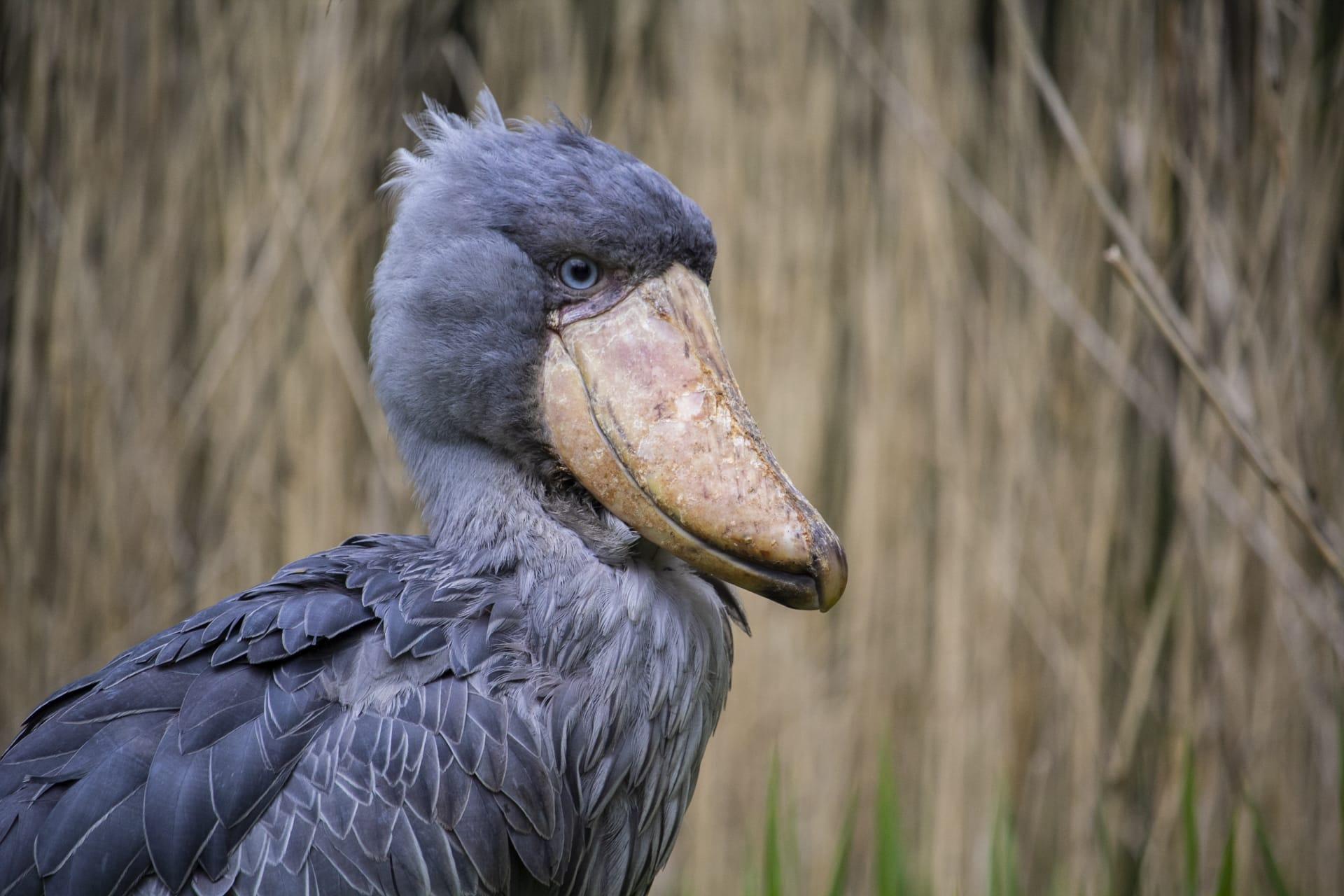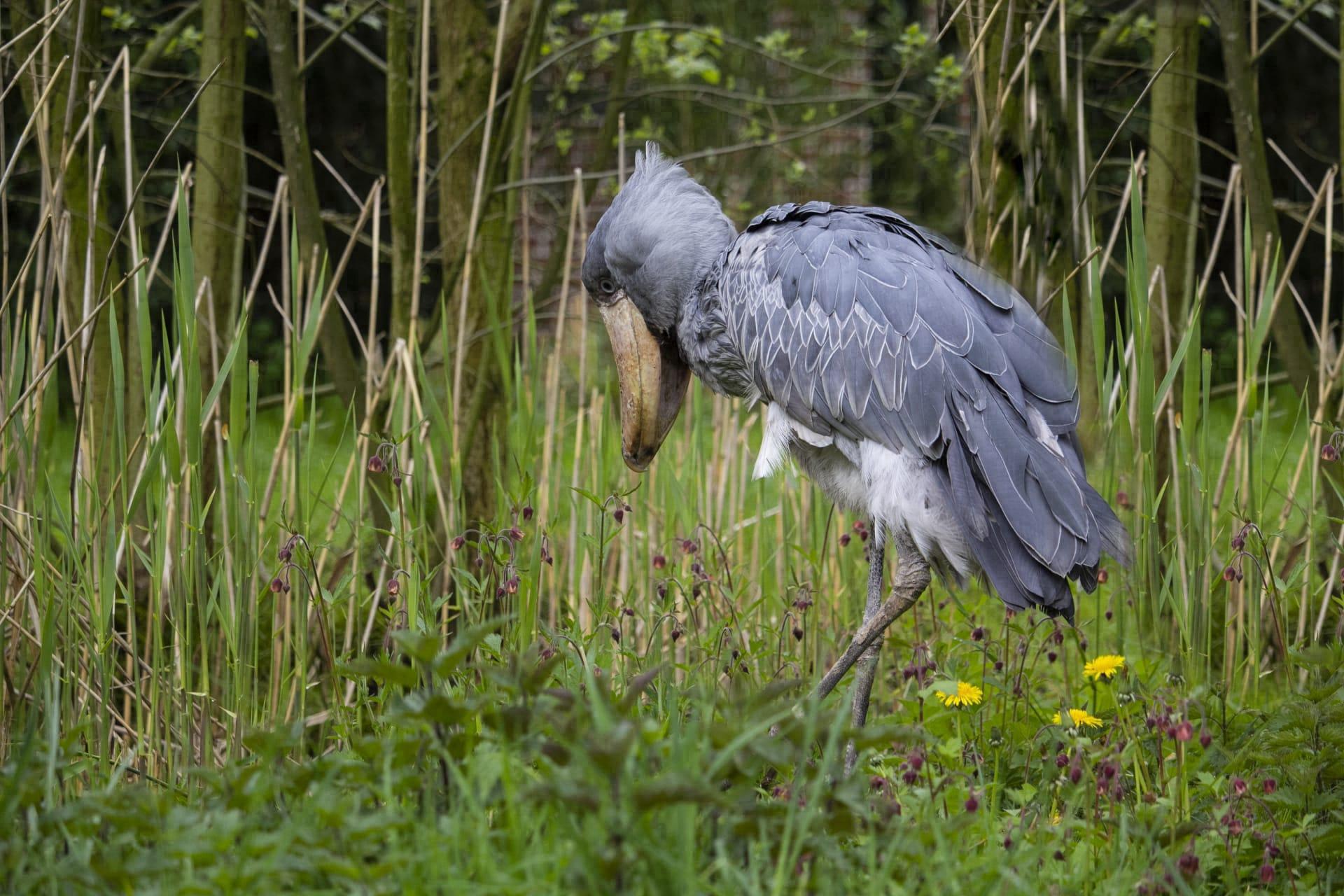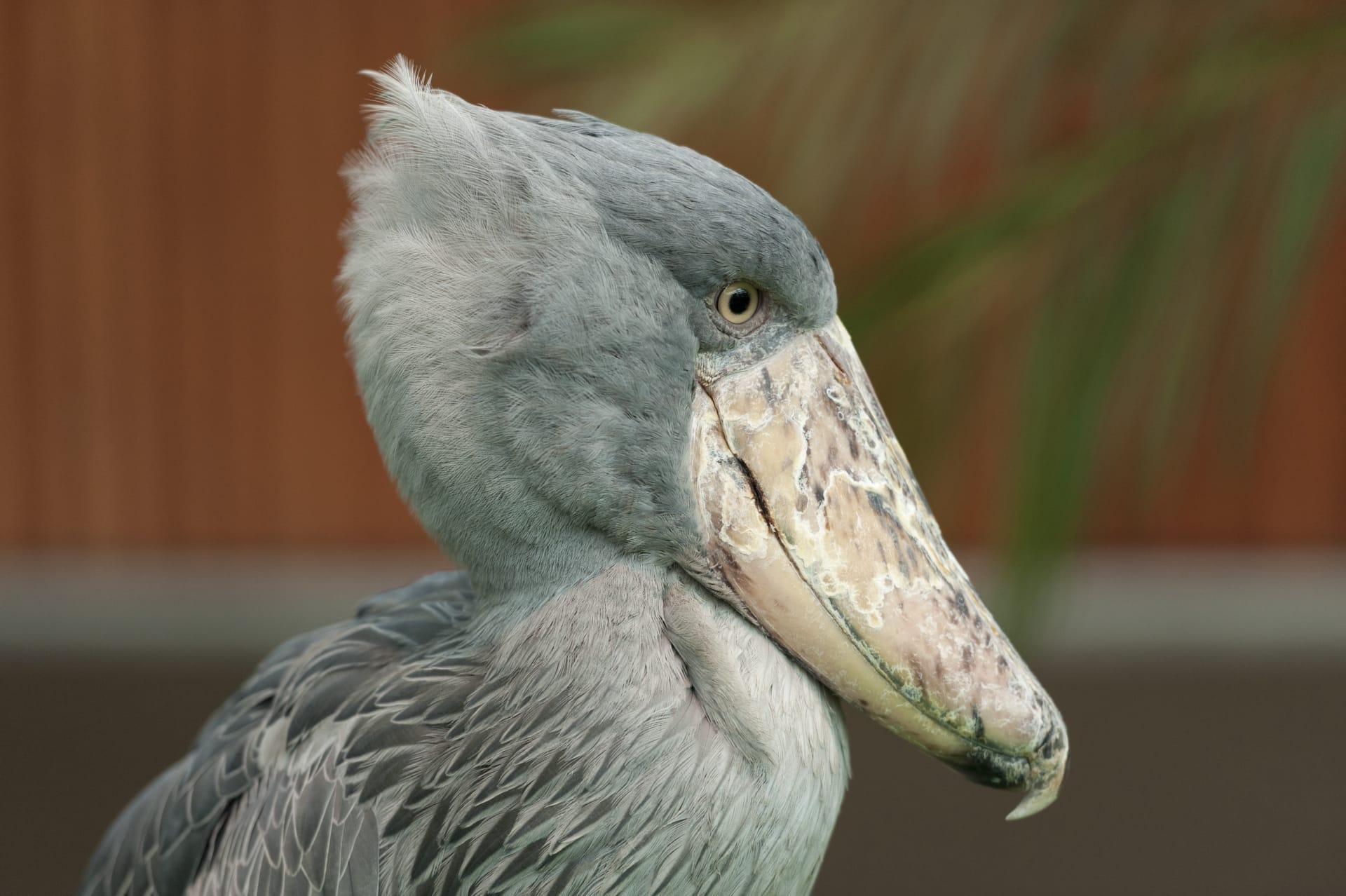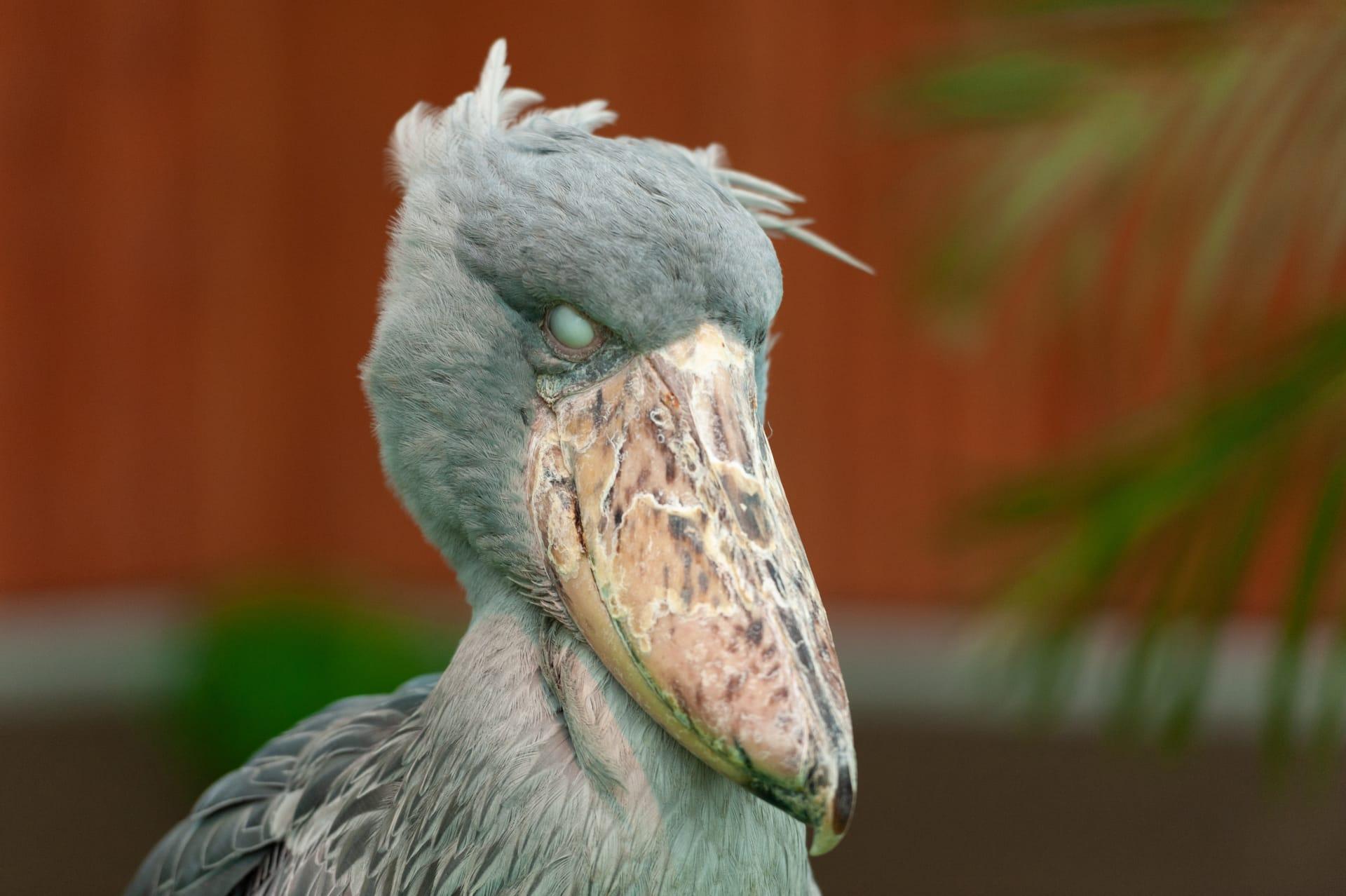1
The Shoebill, scientifically known as Balaeniceps rex, is a prehistoric-looking bird, famous for its shoe-shaped bill. This remarkable bill is not just for show; it's incredibly practical. Measuring up to 9 inches long and 4 inches wide, the bill is perfectly designed for catching its favorite prey, lungfish. The edges of the bill are sharp, aiding the Shoebill in decapitating or halving its catch with precision. This specialized hunting method is a spectacle in itself, with the bird standing motionless for long periods, then striking with lightning speed and power.
Shoebills are predominantly silent birds, but they're known for a peculiar behavior: bill-clattering. When at their nests or interacting with each other, they engage in a clattering sound, reminiscent of a machine gun. This sound is produced by rapidly opening and closing their massive bills, and it's a way to communicate, especially during the breeding season. This behavior is unique among large birds and adds to the Shoebill's mysterious aura. Observers have noted that the sound can be heard up to 50 meters away, a testament to the power of their bill.

2
Standing up to 5 feet tall, Shoebills possess a striking gaze thanks to their intense yellow eyes. These eyes are not just visually captivating; they play a crucial role in hunting. Positioned on the front of their face, the eyes provide binocular vision, essential for depth perception. This feature enables the Shoebill to accurately judge distances in the murky waters of its habitat, increasing the success rate of catching prey. The eyes also have a protective membrane, which the bird can close while keeping the other parts of the eye open, thus protecting their eyes when attacking prey underwater.
Their habitat, primarily in the marshes of East Africa, is as unique as they are. Shoebills prefer large, undisturbed wetlands, which are increasingly rare due to human activity. They are most commonly found in South Sudan, Uganda, eastern Congo, and Zambia. These birds are highly adapted to this habitat, with their long legs and large, broad feet helping them to walk on floating vegetation. This adaptation is crucial for them to reach areas with dense aquatic plant life where their prey, like lungfish and catfish, hide.

3
Shoebills are known for their slow and deliberate movements, which help them to hunt more efficiently. They can stand motionless for hours, waiting for the right moment to strike. This patience is a key aspect of their hunting strategy, as sudden movements can scare away their prey. Their ability to blend in with the surrounding vegetation also aids in their hunting, making them nearly invisible to unsuspecting fish.
Another fascinating aspect of Shoebill behavior is their solitary nature. They are typically seen alone or in pairs, particularly during the breeding season. This is unusual for large birds, as many species are social and form flocks. The Shoebill's preference for solitude extends to their offspring; they usually lay one or two eggs, but often only one chick is raised to adulthood. This is due to the high level of care required and the limited resources in their habitat. The parents take turns feeding the chick with regurgitated fish, ensuring it gets the necessary nutrients to grow.

4
Shoebills have a unique and somewhat intimidating presence, partly due to their static posture and the way they stare intently. This, combined with their large size and prehistoric appearance, can make them seem like creatures from another era. In fact, their lineage can be traced back to the Eocene epoch, making them one of the oldest bird species still existing today. This ancient lineage is evident in their dinosaur-like features, setting them apart from most other bird species.
Despite their fierce appearance and hunting prowess, Shoebills are not aggressive towards humans. They are known to be quite shy and will often move away if approached too closely. This behavior emphasizes the importance of conservation efforts to protect their natural habitats. With increasing human encroachment and habitat destruction, the Shoebill's conservation status is currently listed as vulnerable. Efforts are underway to protect these majestic birds, with emphasis on preserving their natural wetland habitats and raising awareness about their ecological importance.

5
Shoebills are highly specialized feeders, primarily preying on lungfish, which they catch using a technique called 'collapsing'. This involves standing motionless to lure the fish closer and then suddenly collapsing onto the prey, trapping it under their bill. This technique is highly effective in the muddy waters of their habitat, where visibility is low. Their diet also includes other fish, amphibians, and occasionally small reptiles and rodents, demonstrating their adaptability in different environments.
The breeding habits of Shoebills are as unique as their appearance. They are solitary nesters, constructing large nests out of vegetation, usually in dense papyrus swamps. These nests can be over 3 feet in diameter and are carefully built by both parents. The breeding season is closely linked to the dry season, as it's easier for them to catch prey in the receding waters. This timing ensures that the chick, which is born altricial (helpless), has a steady food supply during its critical early development stages. The parents' commitment to raising a single chick further highlights their dedication and the challenges they face in their environment.